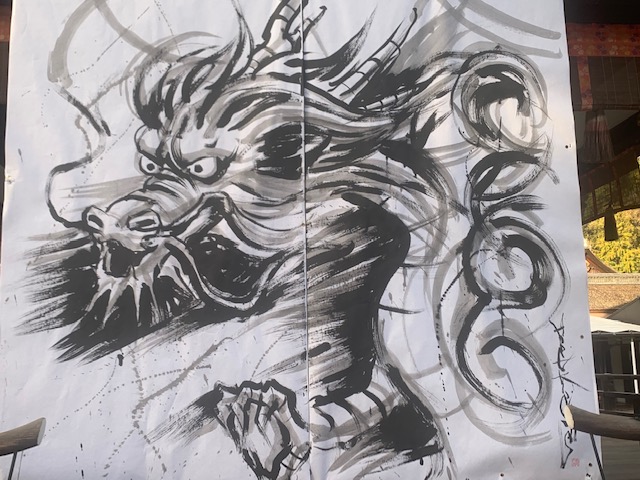
The above angry dragon was displayed at Shimogamo Jinja prior to the change of year and seems very apt in retrospect, given the awful earthquake at the very outset of the year, Jan 1, in the Hokuriku area (Kanazawa and the Noto Peninsula in particular). Hopefully the uplifting attributes of the dragon will come to the fore in the rest of the year.
Meanwhile, there were enormous queues at the small dragon shrine that is one of the seven eto shrines at Shimogamo commemorating the twelve signs of the Chinese Zodiac. In the picture below, the left-side queue is for the dragon hokora (small shrine), the right-hand queue to pay respects at the main shrine. There’s a temporary roofing to keep off rain.
One of Kyoto’s numerous shrines is Takio Jinja, near Tofukuji Zen monastery. Takio means Dragon, which is why the small shrine was packed with New Year worshippers, eager to ensure they have a blessed year ahead. The queue spilled out from the shrine and along the adjacent road.
The shrine has one special attraction, and it made a killing by charging ¥500 to see it. The sculpture of a dragon, carved out of wood on the ceiling of the Maiden (Dancing Platform) was made in the Edo Period (eighteenth century) and is a quite unique work of art. There was a separate queue to view it…
In mythology, the dragon is associated with watery realms, and in paintings it is often surrounded by water or clouds. From watery depths it is able to soar upwards towards heaven breathing fire and overcoming all obstacles in an example that serves to inspire humans. In this way it is able to transition between this world and the other, a fictional creature that is the only unreal animal in the Chinese zodiac but one that has captured the imagination of both East and West.
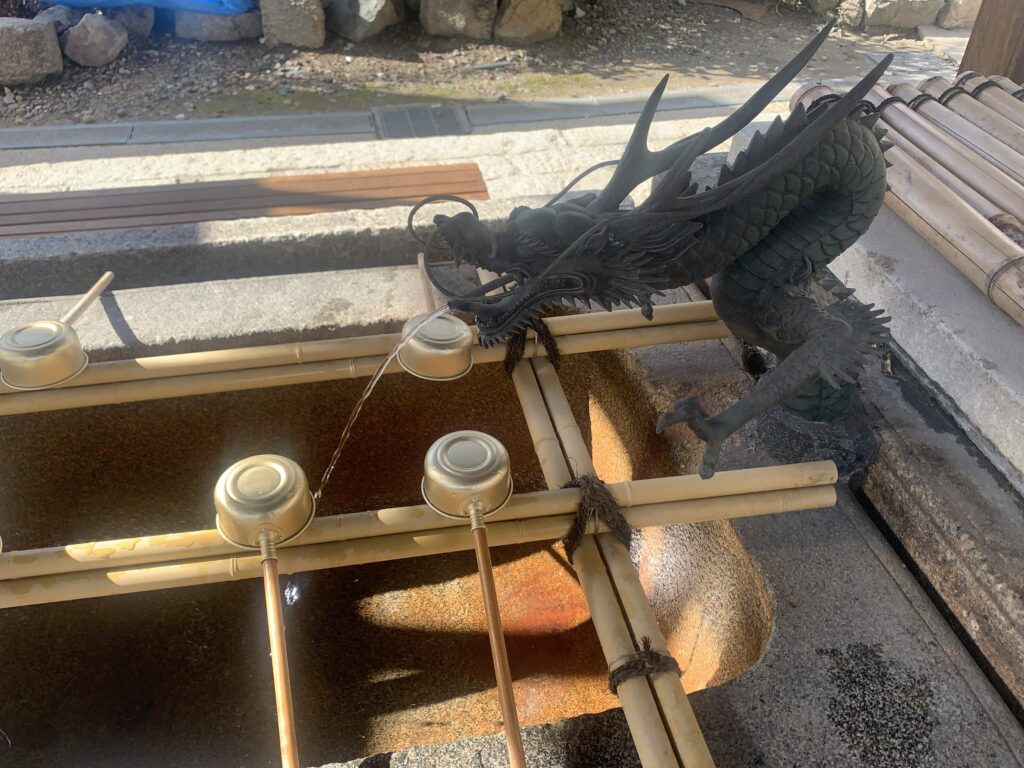
The dragon’s affinity with water makes it a perfect figure for water purification at the temizuya, especially here at Takio Jinja. Such was the demand for dragon charms and amulets that the small shrine had to put up Sold Out signs – even though it had eleven years to prepare for this Year of the Dragon. May all Green Shinto readers have a good one!
On the left, the Chinese characters state that two types of ema (votive plaques) have been sold out. The amulets on the righthand side were in hot demand too. And yet the majority of Japanese claim to be non-religious. To the Western mind, it is a startling paradox and just one of the many ways in which the Japanese tradition baffles the need for clear categorisation.

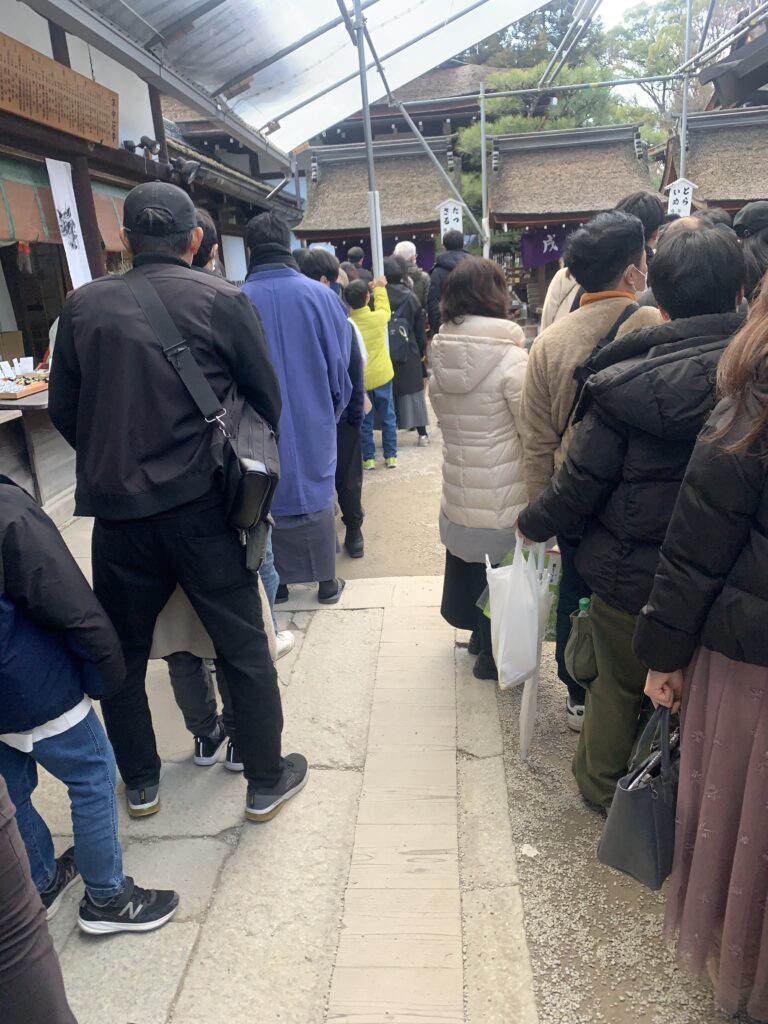
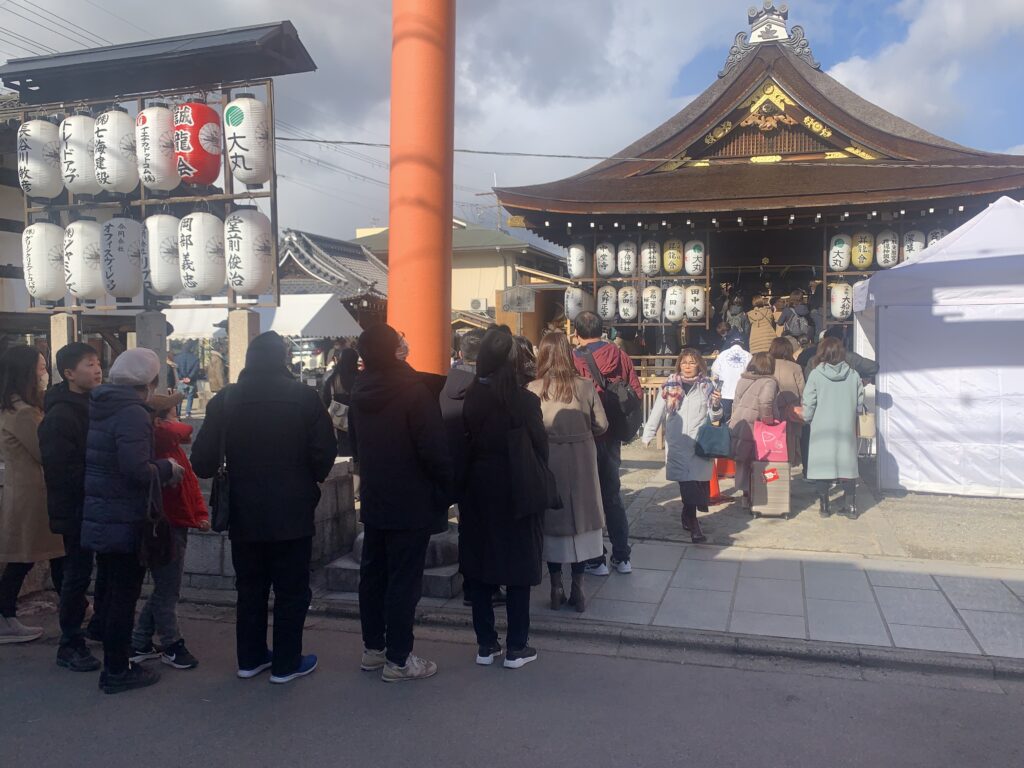
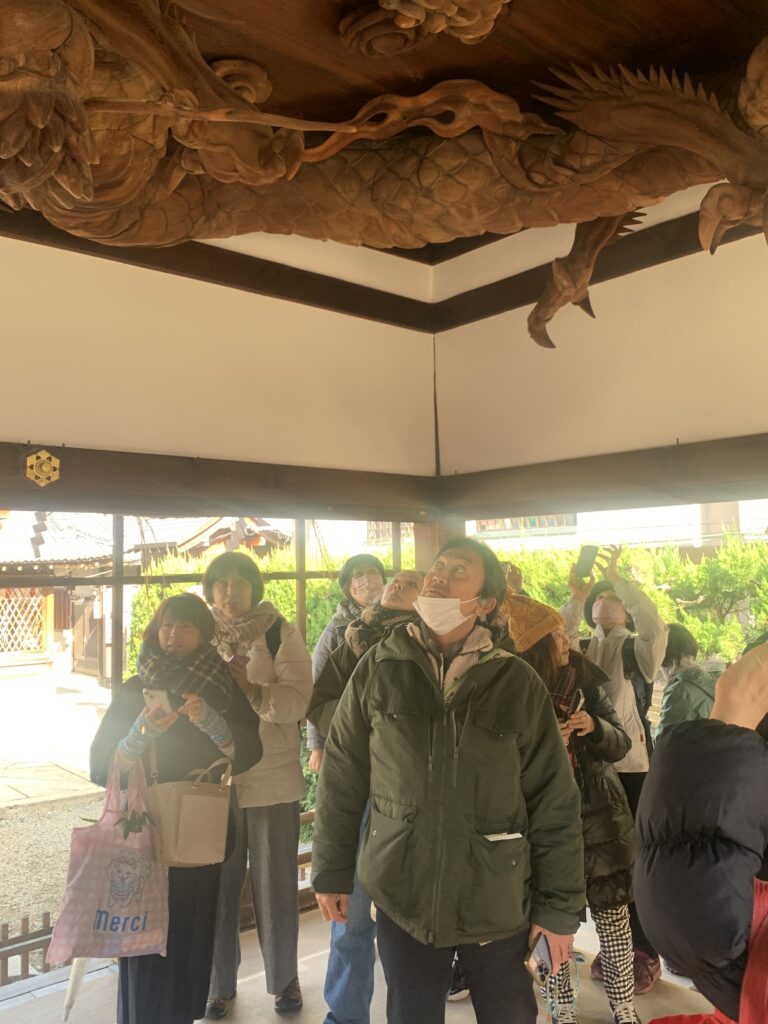
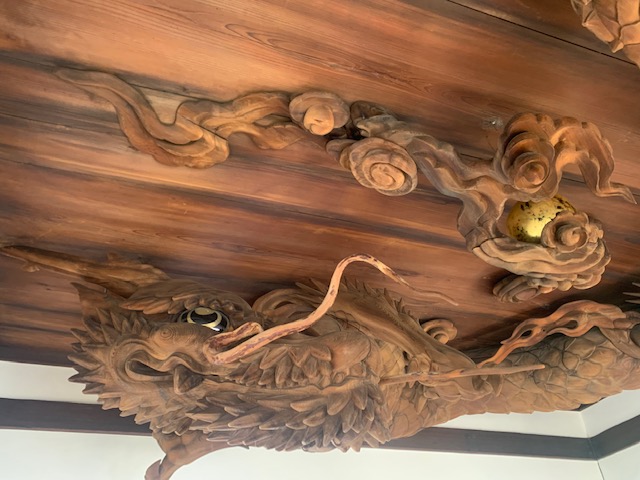
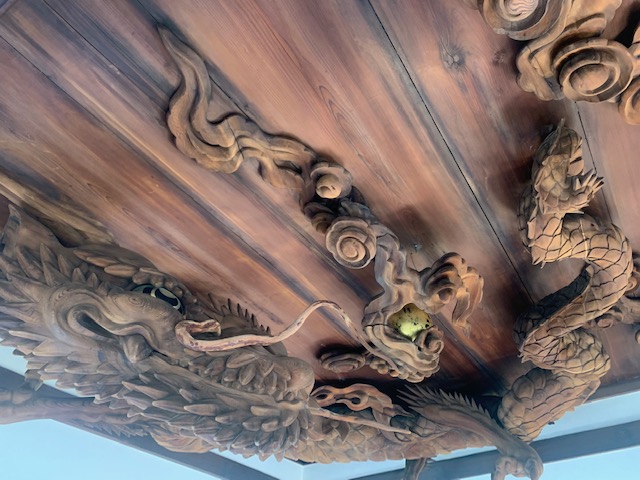
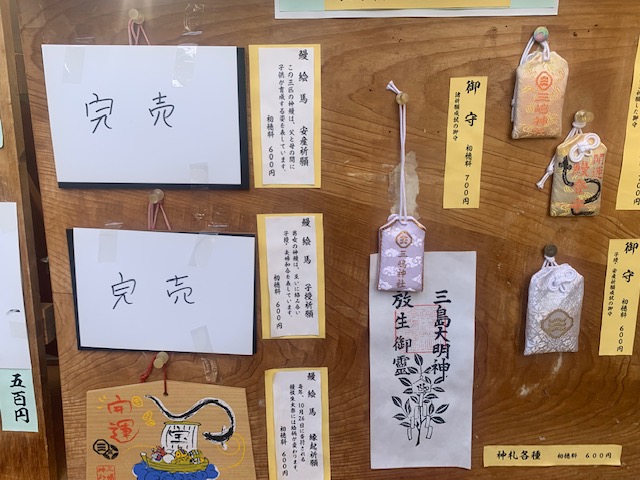
Thank you John sensei
Fascinating.
Happy New Year John. Thank you for the site, your expert voice is always appreciated with each new article. Good luck with the new book!
And thank you kindly for your comment and a happy New Year to you too. I’m glad to say that so far the book has been showered with glowing praise, which is very rewarding.